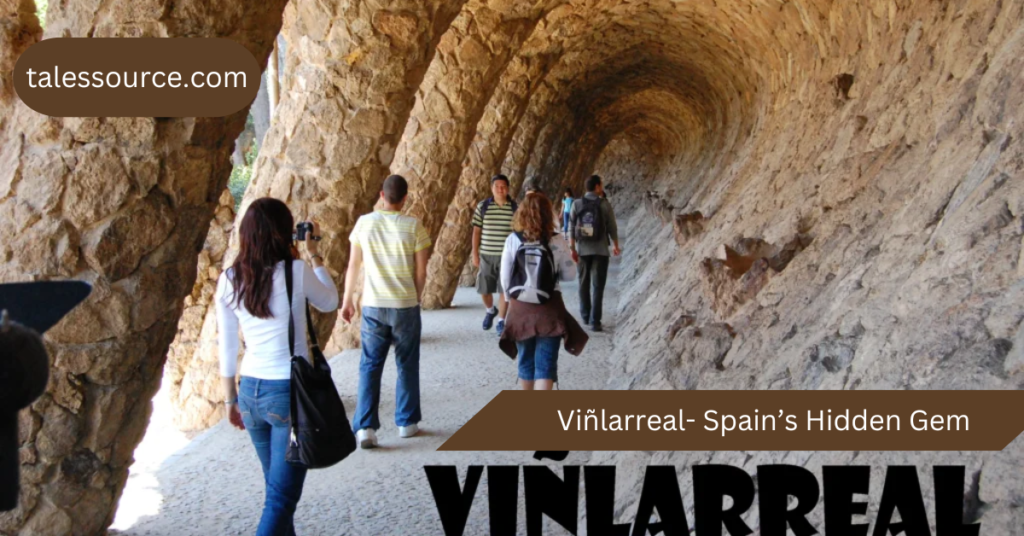Viñlarreal- Spain’s Hidden Gem

Introduction
Nestled in the heart of Spain, Viñlarreal is a town that seamlessly blends its rich historical heritage with a vibrant contemporary culture. With a past that stretches back centuries and a present brimming with life, Viñlarreal is an intriguing destination for travelers seeking both depth and dynamism. This guide explores the multifaceted allure of Viñlarreal, delving into its history, attractions, culture, and much more.
Historical Overview of Viñlarreal
Origins and Early History
Viñlarreal’s history is deeply rooted in Spain’s medieval past. Founded during the 13th century, the town has witnessed a series of significant historical events that have shaped its character. The town’s strategic location made it a pivotal site during various historical periods, including the Reconquista and the Spanish Civil War.
Architectural Heritage
The architectural landscape of Viñlarreal is a testament to its rich history. The town boasts a mix of Gothic, Renaissance, and Baroque styles, with many buildings reflecting the grandeur of bygone eras. Notable structures include the Church of San Pedro and the Palacio de los Condes.
Key Historical Figures
Several influential figures have left their mark on Viñlarreal. Among them are local nobility and historical leaders whose contributions have been crucial to the town’s development. Their legacies are preserved in various monuments and historical records.
Cultural Attractions
Museums and Galleries
Viñlarreal is home to a range of museums and galleries that showcase its artistic heritage. The Museo de Viñlarreal, for example, offers an in-depth look at the town’s artistic evolution, featuring works from both local and international artists.
Festivals and Events
The town’s cultural calendar is packed with vibrant festivals and events. From traditional Spanish fiestas to contemporary music festivals, Viñlarreal offers a lively atmosphere for visitors. Key events include the annual Feria de Viñlarreal and the Semana Santa celebrations.
Local Cuisine
No visit to Viñlarreal is complete without savoring its local cuisine. The town’s gastronomy reflects a blend of traditional Spanish flavors with innovative culinary techniques. Popular dishes include paella, tapas, and local wines.
Natural Beauty and Outdoor Activities
Parks and Green Spaces
Viñlarreal’s natural landscapes offer a refreshing escape from urban life. The town features several parks and green spaces where visitors can enjoy leisurely strolls or picnics. Parque de la Ciudad is a particularly popular spot for families.
Hiking and Nature Trails
For those seeking adventure, Viñlarreal’s surrounding countryside provides ample opportunities for hiking and exploration. Trails such as the Ruta de los Olivos offer stunning views of the local flora and fauna.
Beaches and Water Sports
While Viñlarreal is not directly on the coast, its proximity to the Mediterranean Sea means that visitors can easily access nearby beaches. The coastal town of Castellón, just a short drive away, is perfect for beachgoers and water sports enthusiasts.
Practical Information for Visitors
Getting There
Viñlarreal is well-connected by road and rail, making it easily accessible from major Spanish cities. The town is served by a local train station, and the nearest major airport is located in Castellón.
Accommodation Options
From charming boutique hotels to luxurious resorts, Viñlarreal offers a range of accommodation options to suit different preferences and budgets. The town’s hospitality sector is known for its warmth and attention to detail.
Local Transportation
Getting around Viñlarreal is straightforward, with various public transportation options available. Buses and taxis provide convenient ways to explore the town and its surroundings.
Are there any festivals in Viñlarreal?
Yes, Viñlarreal hosts several vibrant festivals throughout the year. Notable among them is the Feria de Viñlarreal, an annual event celebrating local culture with music, dance, and traditional activities. The town also observes Semana Santa (Holy Week) with processions and religious ceremonies. These festivals offer a rich cultural experience and an opportunity to engage with the local community.
What outdoor activities are available in Viñlarreal?
Hiking: Explore scenic trails such as the Ruta de los Olivos, offering picturesque views of the countryside and local flora
Parks and Green Spaces: Relax and unwind in local parks like Parque de la Ciudad, ideal for picnics and leisurely strolls.
Cycling: Take advantage of bike-friendly routes around the town and its outskirts.
Exploring Nearby Beaches: Although Viñlarreal is not on the coast, nearby coastal towns like Castellón provide access to beautiful beaches for swimming and sunbathing.
Nature Observation: Enjoy birdwatching and wildlife spotting in the natural areas surrounding Viñlarreal.
How do you get to Viñlarreal from Madrid?
By Train:
- Renfe AVE: Take a high-speed AVE train from Madrid’s Atocha Station to Castellón de la Plana. The journey typically takes around 1.5 to 2 hours.
- From Castellón de la Plana, you can take a local train or bus to Viñlarreal, which is approximately a 15-minute ride.
By Car:
- Drive from Madrid to Viñlarreal, which is about 300 kilometers (186 miles) and takes approximately 3 to 4 hours via the A-7 motorway.
By Bus:
- Several bus companies operate services from Madrid to Castellón de la Plana. The bus journey usually takes around 4 to 5 hours. From Castellón de la Plana, you can transfer to a local bus or train to reach Viñlarreal.
Conclusion
Viñlarreal is a town that effortlessly blends historical charm with modern vibrancy. Whether you’re interested in its rich past, vibrant culture, or natural beauty, Viñlarreal offers a unique and enriching experience. Its blend of tradition and contemporary life makes it a must-visit destination for travelers seeking both depth and dynamism.
FAQs
1. What is the best time to visit Viñlarreal?
The best time to visit Viñlarreal is during the spring and autumn months when the weather is mild and pleasant. Summer can be quite hot, while winter may be cooler but still enjoyable.
2. Are there guided tours available in Viñlarreal?
Yes, there are several guided tour options available in Viñlarreal. These tours cover various aspects of the town’s history, culture, and attractions.
3. What are the must-see attractions in Viñlarreal?
Must-see attractions include the Church of San Pedro, the Palacio de los Condes, and the Museo de Viñlarreal. The local parks and nearby beaches are also worth visiting.
4. How can I get to Viñlarreal from Barcelona?
You can take a train or bus from Barcelona to Viñlarreal. The train journey typically takes around 1.5 to 2 hours, while the bus journey may take a bit longer.
5. What local dishes should I try in Viñlarreal?
Local dishes to try include paella, various tapas, and regional wines. The town’s gastronomy reflects a rich blend of traditional and modern flavors.
6. Is Viñlarreal a family-friendly destination?
Yes, Viñlarreal is a family-friendly destination with numerous parks, green spaces, and family-oriented activities. The town’s safe and welcoming atmosphere makes it ideal for families.
7. Are there any annual festivals in Viñlarreal?
Yes, Viñlarreal hosts several annual festivals, including the Feria de Viñlarreal and Semana Santa celebrations. These events offer a great opportunity to experience local culture and traditions.
8. What outdoor activities are available in Viñlarreal?
Outdoor activities include hiking on local nature trails, enjoying parks and green spaces, and exploring nearby beaches for water sports.
9. What types of accommodation are available in Viñlarreal?
Viñlarreal offers a range of accommodation options, from boutique hotels to luxury resorts. There are also budget-friendly options available for travelers.
10. How can I explore Viñlarreal on a budget?
To explore Viñlarreal on a budget, consider staying in budget accommodations, using public transportation, and enjoying local street food. Many of the town’s attractions are free or low-cost.





